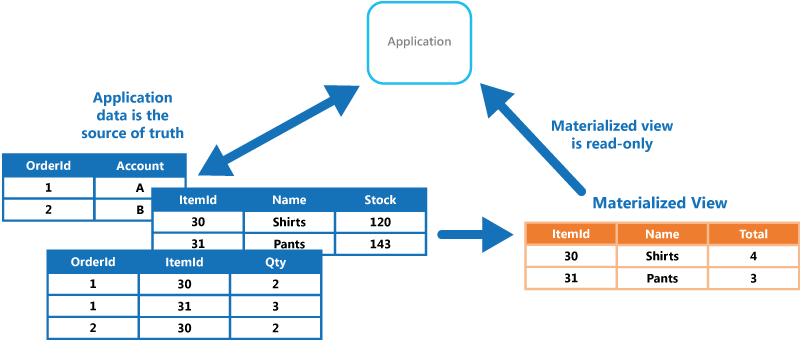When storing data, the priority for developers and data administrators is often focused on how the data is stored, as opposed to how it is read. The chosen storage format is usually closely related to the format of the data, requirements for managing data size and data integrity, and the kind of store in use.
For example, when using NoSQL Document store, the data is often represented as a series of aggregates, each of which contains all of the information for that entity.
However, this may have a negative effect on queries. When a query requires only a subset of the data from some entities, such as a summary of orders for several customers without all of the order details, it must extract all of the data for the relevant entities in order to obtain the required information.
To support efficient querying, a common solution is to generate, in advance, a view that materializes the data in a format most suited to the required results set. The Materialized View pattern describes generating prepopulated views of data in environments where the source data is not in a format that is suitable for querying, where generating a suitable query is difficult, or where query performance is poor due to the nature of the data or the data store.
These materialized views, which contain only data required by a query, allow applications to quickly obtain the information they need. In addition to joining tables or combining data entities, materialized views may include the current values of calculated columns or data items, the results of combining values or executing transformations on the data items, and values specified as part of the query. A materialized view may even be optimized for just a single query.
A key point is that a materialized view and the data it contains is completely disposable because it can be entirely rebuilt from the source data stores. A materialized view is never updated directly by an application, and so it is effectively a specialized cache.
When the source data for the view changes, the view must be updated to include the new information. This may occur automatically on an appropriate schedule, or when the system detects a change to the original data. In other cases it may be necessary to regenerate the view manually.
Below shows an example of how the Materialized View pattern might be used.

The Materialized View pattern
This pattern is ideally suited for:
This pattern might not be suitable in the following situations: